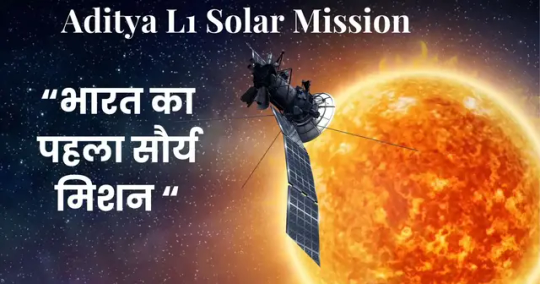#aditya l1 budget
Text
Aditya L1 Mission Launch शुरू: कब और कहाँ देखें, लॉन्च की तारीख और समय
Aditya L1 Mission Launch: आदित्य एल1 लॉन्च, इसरो लैग्रेन्जियन प्वाइंट 1 से सूर्य का अध्ययन करने के लिए 2 सितंबर को आदित्य-एल1 सौर मिशन लॉन्च करेगा।
आदित्य एल1 लॉन्च: चंद्रयान-3 ( Chandrayaan 3 ) की सफल सॉफ्ट लैंडिंग के बाद अब इसरो देश का पहला सौर मिशन Aditya L1 लॉन्च करने की तैयारी में है। आदित्य-एल1 अंतरिक्ष यान को सौर कोरोना के दूरस्थ अवलोकन और एल1 (सूर्य-पृथ्वी लैग्रेंजियन बिंदु) पर सौर हवा…

View On WordPress
#aditya l1 budget#aditya l1 launch date 2023#aditya l1 launch date and landing date#aditya l1 launch landing date#aditya l1 launch live#aditya l1 launch place#aditya l1 mission launch date 2023#when will aditya l1 launch date and time
0 notes
Text
India and space #1
This week with the launch of Chandrayaan-3 India has become the 4th nation to land on moon, first to even set foot on the southern part of the moon. PM Modi said, with this India has leaped a big step in space and technology. Chandrayaan-3 is a Lander-Rover mission, it is a geosynchronous satellite made by ISRO, It was launched in three stages and loaded with many equipments (ILSA-to measure seismic activity, ChaSTE-to measure moon’s surface temperature, LP- Langmuir Probe to measure near-surface plasma density over time) which is said to help ISRO researchers collect more data of moon and to get its better understanding of it.
Chandrayaan-3 was launched on 14th July 2023 from Satish Dhawan Space Center, it landed on moon after 40-day voyage at 6:04 pm. With its successful mission on moon PM Modi announced that India will be expanding its satellite network, will send humans into space, will develop semi-cryogenic engine, plan on development and making of space station, send an observatory-class satellite to study solar activities (Aditya-L1, launched on 3rd September) and so on.
India on 3rd August 2023 passed Indian space Policy 2023, where space budget is increased from 2% to 10%. The policy roles of different space agencies like space sector PSU NewSpace India Limited (NSIL), the Indian National Space Promotion and Authorization Center (IN-SPACe), and ISRO are more precisely defined. The ISRO chairman said this policy explains very well the framework for the private sector to use facilities of ISRO and also encourages investors to put money in the field.
India had its setbacks with Chandrayaan-2 and 1, but ISRO doesn’t seem to lose its determination on the way and doesn't seem on giving up anytime soon. Even though ISRO is late in the race to explore space, but it looks like it will cover the gap soon.
2 notes
·
View notes
Text
Chandrayaan-3: India's Successful Lunar Landing

Chandrayaan-3, India's latest lunar mission, has achieved a historic milestone by successfully landing on the moon's surface. This achievement comes after the setback of its predecessor, Chandrayaan-2, in 2019. The landing, which took place as planned on Wednesday at 5:34 am PT (6:04 pm IST), makes India the fourth nation globally to achieve a soft landing on the moon, following the former Soviet Union, the U.S., and China. What sets this achievement apart is that India is the first country to successfully land on the lunar south pole, a region of great scientific interest.
Addressing the audience after the successful landing, ISRO chairman S. Somanath expressed his gratitude to the thousands of scientists, engineers, staff, and industries involved in the mission. Chandrayaan-3's success is a testament to their hard work and dedication.
The Chandrayaan-3 mission, launched on July 14th by the Indian Space Research Organization (ISRO), aims to demonstrate safe lunar landing and rover operations while conducting scientific experiments. Despite a budget of less than $75 million, the spacecraft consists of a propulsion module, lander, and rover, equipped with seven scientific instruments.
To overcome the challenges faced by its predecessor, Chandrayaan-3 features improved sensors, software, and propulsion systems in its lander. Rigorous simulations and testing were conducted to ensure a robust landing. The lander will conduct experiments on various aspects, including seismic vibrations, lunar temperature, and spectral signatures of Earth.
The Chandrayaan-3 rover, similar to that of Chandrayaan-2, will accompany the lander. Both the lander and rover have a mission life of one lunar day, equivalent to 14 Earth days.
This achievement comes 14 years after India's first moon landing mission in 2008, which discovered evidence of water molecules in the lunar atmosphere. While the Chandrayaan-2 lander-rover mission faced challenges during its touchdown, the orbiter continues to study the moon from orbit and played a critical role in locating the landing site for Chandrayaan-3.
India's space exploration efforts have seen significant growth in recent years, with over a hundred space tech startups contributing to the development of launch vehicles, satellites, and earth imaging technology. The country has also introduced a space policy to foster collaboration between private companies and government entities.
Prime Minister Narendra Modi emphasized that India's moon mission is a shared achievement that belongs to all of humanity. He noted that India's approach of "one Earth, one family, one future" resonates globally and that India's success will benefit future moon missions by other countries.
ISRO has a list of missions in progress, including the long-anticipated human spaceflight mission, Gaganyaan, and the solar observatory project, Aditya L1, to study the sun.
India's collaboration with NASA, including signing the Artemis Accords, signifies its growing role in international space exploration. NASA is providing advanced training to Indian astronauts and planning to send them to the International Space Station next year. Additionally, ISRO and NASA are working together to launch a low-Earth observatory (LEO) in 2024, which will provide valuable data for studying Earth's ecosystems, ice mass, vegetation, sea level, and natural disasters.
Chandrayaan-3's successful lunar landing is a significant step forward for India's space program, inspiring further exploration and collaboration on the global stage.
Read the full article
0 notes